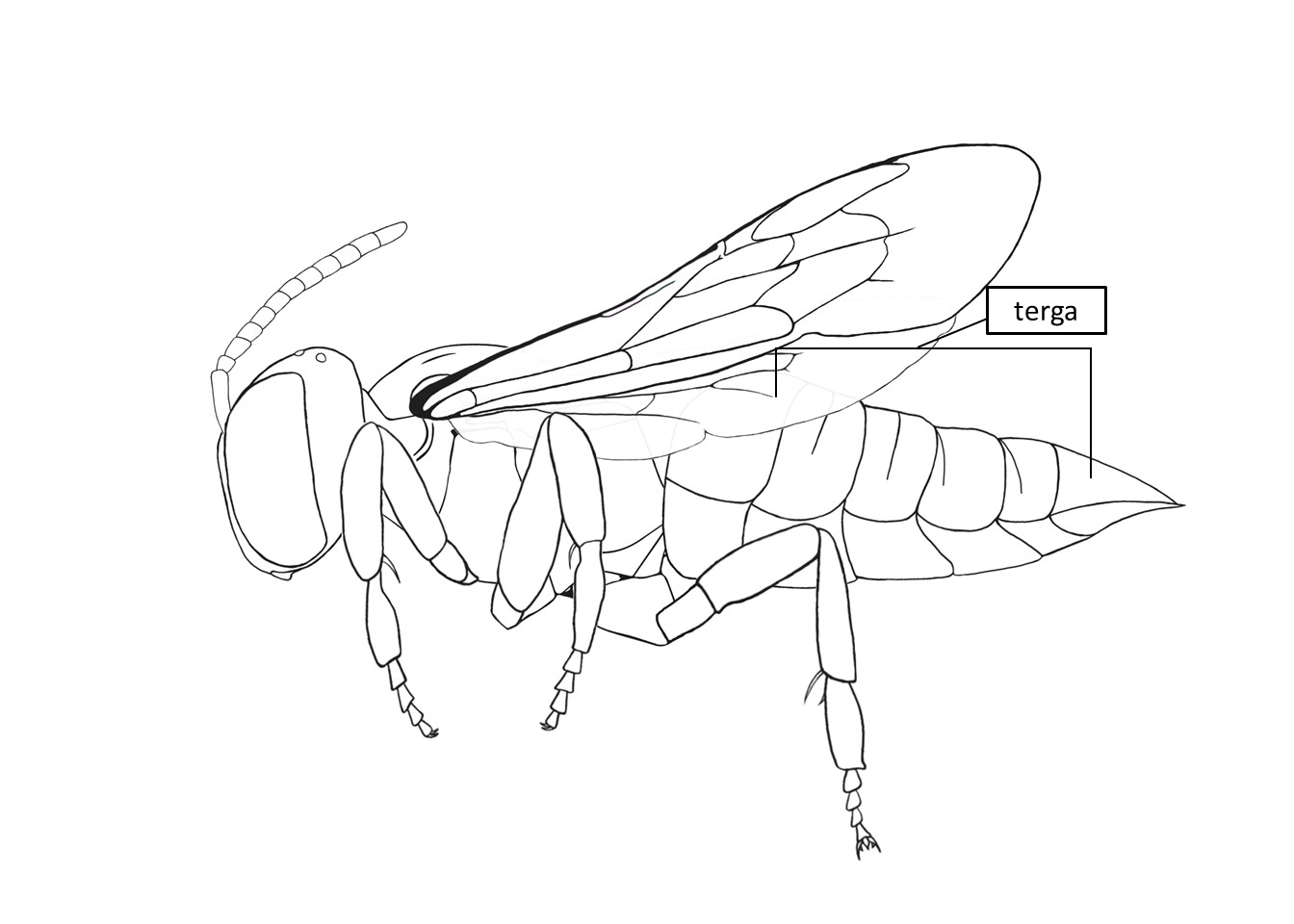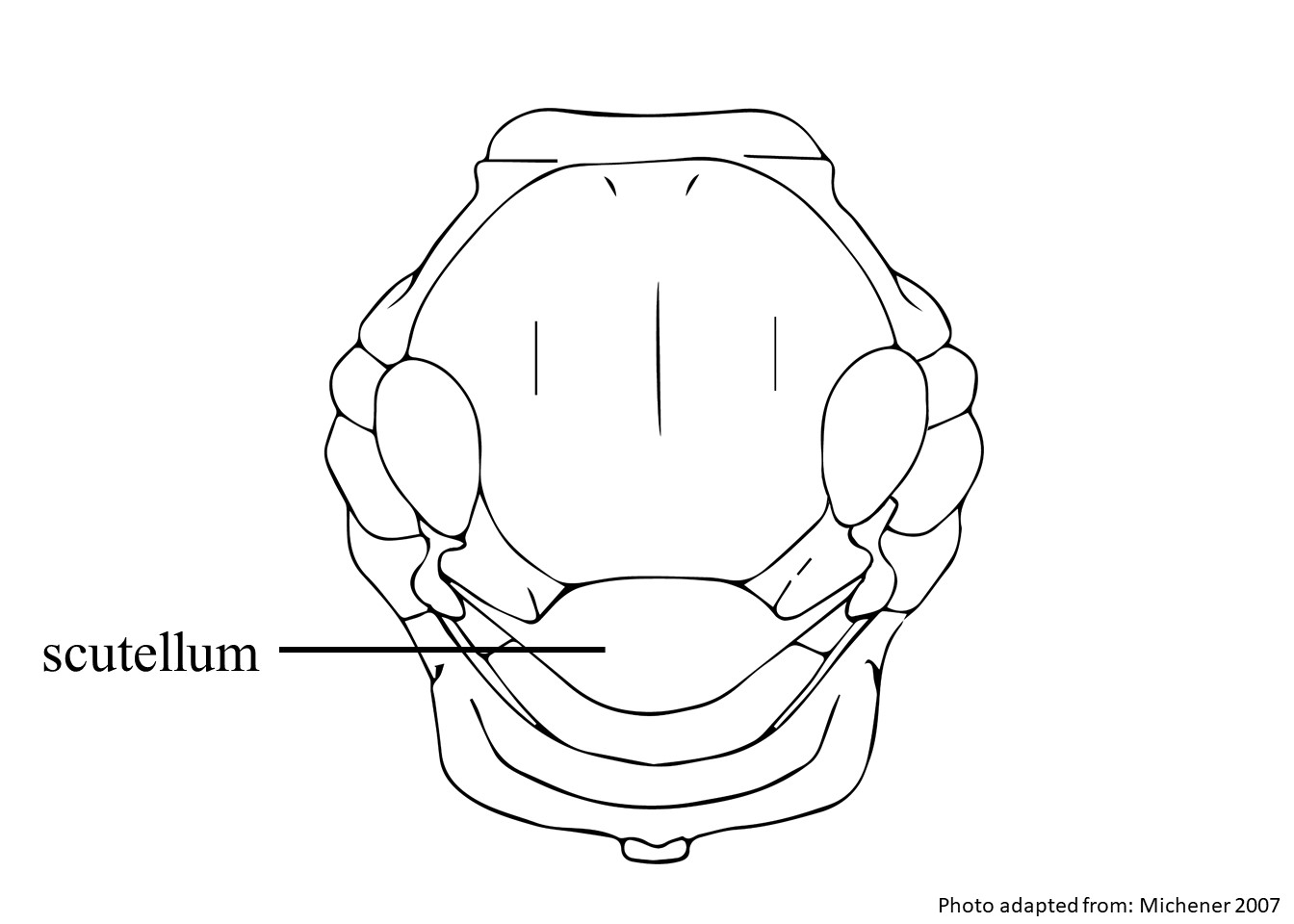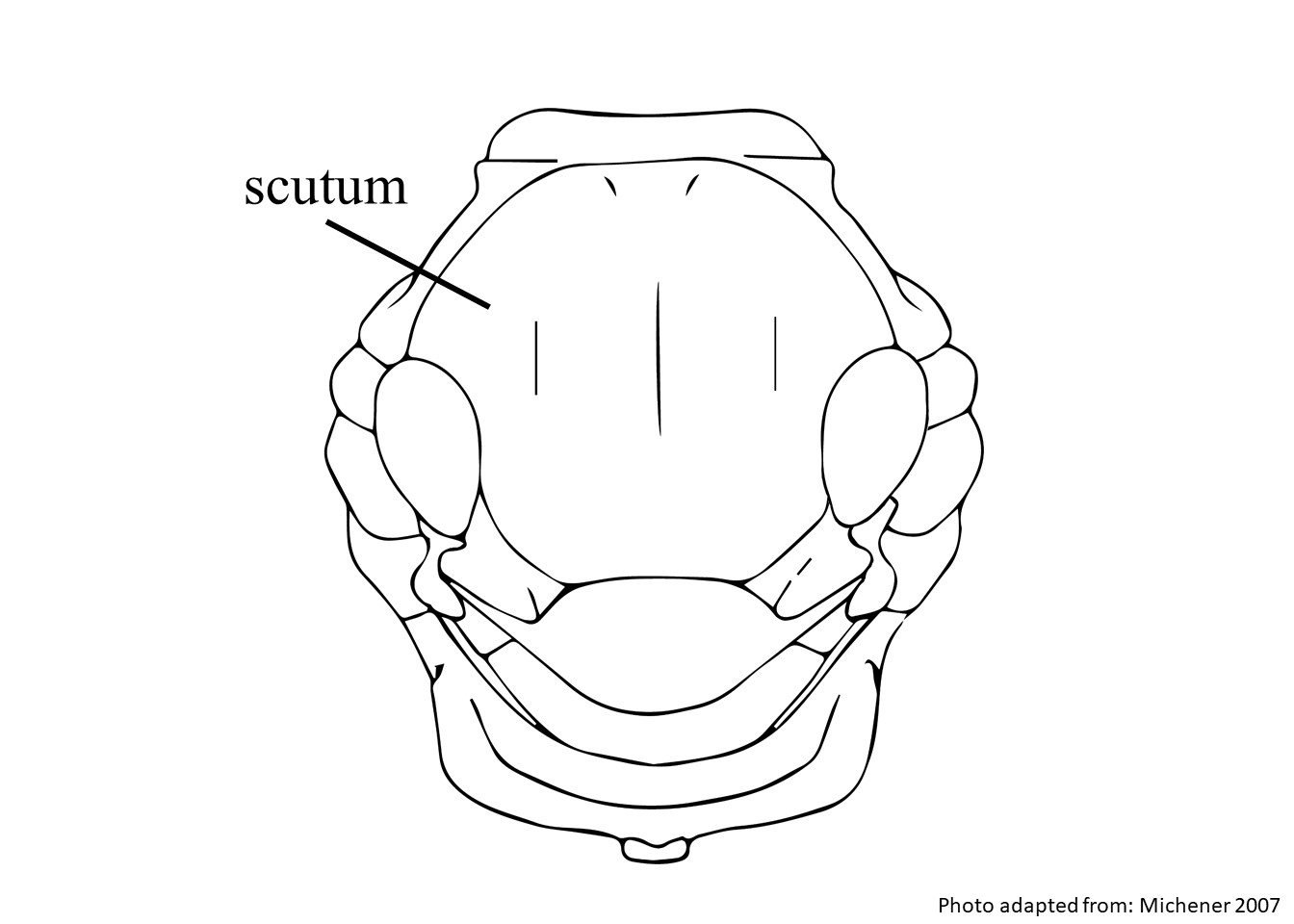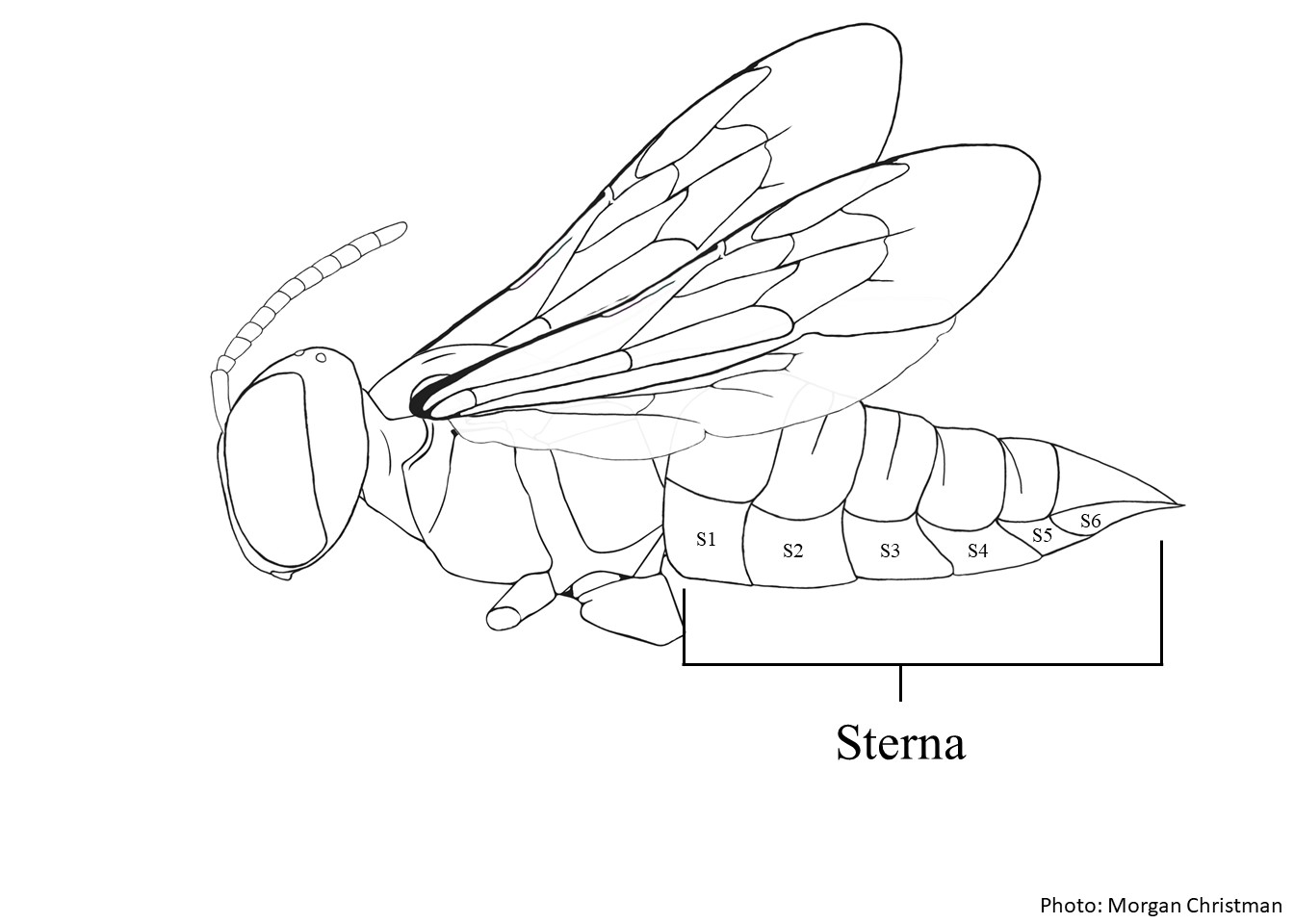Taxonomy
Family: Megachilidae
Subfamily: Megachilinae
Tribe: Anthidiini
Genus: Pseudoanthidium, Friese 1898
Subgenus: Pseudoanthidium, Friese 1898
Species: Pseudoanthidium tropicum (Warncke, 1982)
Background
Pseudoanthidium tropicum are small, 5–7 mm bees. They have a predominantly brown
integumentintegument:
a tough, protective outer layer
with symmetrical yellow spots on their face,
tergaterga:
the segments on the top side of the abdomen, often abbreviated when referring to a specific segment to T1, T2, T3, T4, T5, T6, or T7

, and
scutellumscutellum:
shield shaped plate behind scutum

. Their legs are predominantly yellow to orange and may be brown at the base. The size of the yellow portions varies within the species. They have a thin coat of white
pubescencepubescence:
short, fine hair
that covers most of their bodies. Their wings are translucent and sometimes slightly brown.
Distribution
Pseudoanthidium tropicum is known only from Iran (
Litman et al. 2021Litman et al. 2021:
Litman, J. R., Fateryga, A. V., Griswold, T. L., Aubert, M., Proshchalykin, M. Y., Le Divelec, R., Burrows, S. & Praz, C. J. 2022. Paraphyly and low levels of genetic divergence in morphologically distinct taxa: revision of the Pseudoanthidium scapulare complex of carder bees (Apoidea: Megachilidae: Anthidiini). Zoological Journal of the Linnean Society, 195(4): 1287-1337.).
Host associations
Few specimens of
Pseudoanthidium tropicum have been recorded but they have been observed visiting
Centaurea sp. (Asteraceae) (
Litman et al. 2021Litman et al. 2021:
Litman, J. R., Fateryga, A. V., Griswold, T. L., Aubert, M., Proshchalykin, M. Y., Le Divelec, R., Burrows, S. & Praz, C. J. 2022. Paraphyly and low levels of genetic divergence in morphologically distinct taxa: revision of the Pseudoanthidium scapulare complex of carder bees (Apoidea: Megachilidae: Anthidiini). Zoological Journal of the Linnean Society, 195(4): 1287-1337.).
Diagnostic characteristics
(Modified from Litman et al. 2021Litman et al. 2021:
Litman, J. R., Fateryga, A. V., Griswold, T. L., Aubert, M., Proshchalykin, M. Y., Le Divelec, R., Burrows, S. & Praz, C. J. 2022. Paraphyly and low levels of genetic divergence in morphologically distinct taxa: revision of the Pseudoanthidium scapulare complex of carder bees (Apoidea: Megachilidae: Anthidiini). Zoological Journal of the Linnean Society, 195(4): 1287-1337.)
-
Female T1–T2 punctationpunctation:
overall pattern of the punctures on a surface of a bee, includes size of punctures and the distance between them
fine, as smaller than the punctationpunctation:
overall pattern of the punctures on a surface of a bee, includes size of punctures and the distance between them
on scutumscutum:
the large segment on top of the thorax located between the wings and behind the head
 , with shiny interspaces.
, with shiny interspaces.
-
Male gonostylusgonostylus:
the apical-most appendage of the male genitalia, which is usually quite hairy
approximately parallel-sided. Notch at the apexapex:
end of any structure
absent.
-
Male S3S3:
the plates on the underside of the abdomen, often abbreviated when referring to a specific segment to S1, S2, S3, S4, S5, S6, S7, or S8
 premarginal brush with strongly hooked hairs at the tips.
premarginal brush with strongly hooked hairs at the tips.
-
Male laterallateral:
relating, pertaining, or attached to the side
combs on S5S5:
the plates on the underside of the abdomen, often abbreviated when referring to a specific segment to S1, S2, S3, S4, S5, S6, S7, or S8
 small, with the apexapex:
small, with the apexapex:
end of any structure
no wider than the arm proceeding it.
May be confused with
Pseudoanthidium tropicum can be readily distinguished from other
Pseudoanthidium (Pseudoanthidium) by their small size and brown to reddish-brown
integumentintegument:
a tough, protective outer layer
.
Nesting behavior
Little is known about the nesting biology of
Pseudoanthidium tropicum but most species of
Pseudoanthidium nest in pre-existing cavities like in wood, stems, galls or crevices (
Litman et al. 2021Litman et al. 2021:
Litman, J. R., Fateryga, A. V., Griswold, T. L., Aubert, M., Proshchalykin, M. Y., Le Divelec, R., Burrows, S. & Praz, C. J. 2022. Paraphyly and low levels of genetic divergence in morphologically distinct taxa: revision of the Pseudoanthidium scapulare complex of carder bees (Apoidea: Megachilidae: Anthidiini). Zoological Journal of the Linnean Society, 195(4): 1287-1337.).
Known invasives
There are no known invasives.
 , and scutellumscutellum:
, and scutellumscutellum:, with shiny interspaces.
 premarginal brush with strongly hooked hairs at the tips.
premarginal brush with strongly hooked hairs at the tips. small, with the apexapex:
small, with the apexapex: